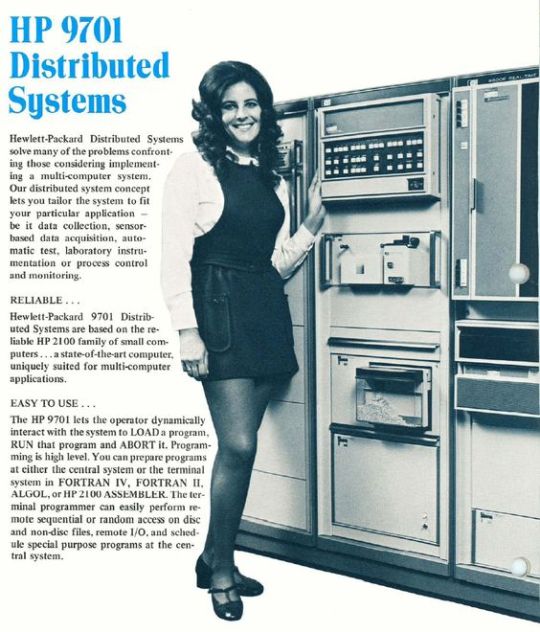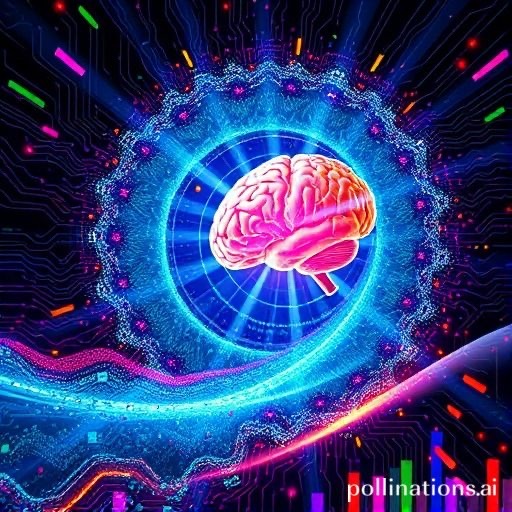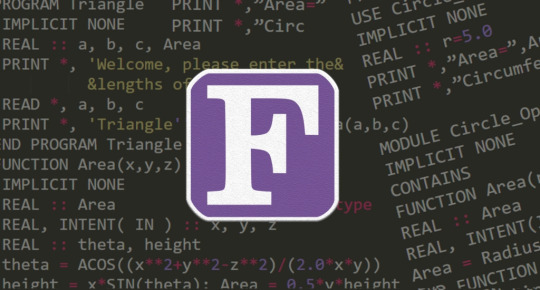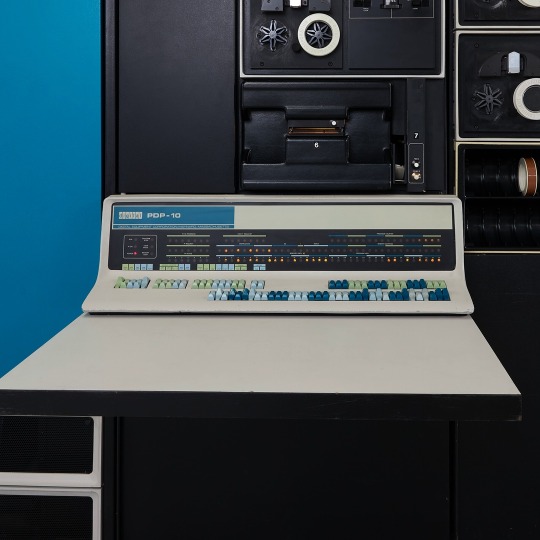#fortran program
Explore tagged Tumblr posts
Text
Hewlett-Packard, HP 9701 ...

Post #301: Hewlett-Packard, The HP 9701 Distributed System based on HP 2100 family, A Multi-Computer System, Programming with Fortran, Algol and Assembler, 1960s.
22 notes
·
View notes
Note
do u code
Not well but I took a class in object-oriented programming (using C#) some years ago and I’m currently learning Fortran for work
#asks#anon#why#also I know Fortran is old as hell#but it’s still widely used in the world of physics research and scientific programming#because of the massive amount of scientific libraries and repositories available for Fortran#I’m specifically learning fortran 95/2003#I’ve also used python for a whole bunch of physical modelling stuff#and I learned JavaScript in highschool but that doesn’t count
2 notes
·
View notes
Text
Doing server maintenance tonight. At the end of the night I should have 7 different computers all hooked up together. Only problem is I have no idea what I want to do with all this computing power. I essentially have a cheap AMD Threadripper at my disposal.
Maybe I'll keep banging my head against Fortran to try and get my neural network to actually function. I'm running into problems with how to store the neural network data. Fortran doesn't have dynamically sized arrays so I have to either put in a big high rank array or have a bunch of smaller arrays with less manageable code.
5 notes
·
View notes
Text

The Evolution of Programming Paradigms: Recursion’s Impact on Language Design
“Recursion, n. See Recursion.” -- Ambrose Bierce, The Devil’s Dictionary (1906-1911)
The roots of programming languages can be traced back to Alan Turing's groundbreaking work in the 1930s. Turing's vision of a universal computing machine, known as the Turing machine, laid the theoretical foundation for modern computing. His concept of a stack, although not explicitly named, was an integral part of his model for computation.
Turing's machine utilized an infinite tape divided into squares, with a read-write head that could move along the tape. This tape-based system exhibited stack-like behavior, where the squares represented elements of a stack, and the read-write head performed operations like pushing and popping data. Turing's work provided a theoretical framework that would later influence the design of programming languages and computer architectures.
In the 1950s, the development of high-level programming languages began to revolutionize the field of computer science. The introduction of FORTRAN (Formula Translation) in 1957 by John Backus and his team at IBM marked a significant milestone. FORTRAN was designed to simplify the programming process, allowing scientists and engineers to express mathematical formulas and algorithms more naturally.
Around the same time, Grace Hopper, a pioneering computer scientist, led the development of COBOL (Common Business-Oriented Language). COBOL aimed to address the needs of business applications, focusing on readability and English-like syntax. These early high-level languages introduced the concept of structured programming, where code was organized into blocks and subroutines, laying the groundwork for stack-based function calls.
As high-level languages gained popularity, the underlying computer architectures also evolved. James Hamblin's work on stack machines in the 1950s played a crucial role in the practical implementation of stacks in computer systems. Hamblin's stack machine, also known as a zero-address machine, utilized a central stack memory for storing intermediate results during computation.
Assembly language, a low-level programming language, was closely tied to the architecture of the underlying computer. It provided direct control over the machine's hardware, including the stack. Assembly language programs used stack-based instructions to manipulate data and manage subroutine calls, making it an essential tool for early computer programmers.
The development of ALGOL (Algorithmic Language) in the late 1950s and early 1960s was a significant step forward in programming language design. ALGOL was a collaborative effort by an international team, including Friedrich L. Bauer and Klaus Samelson, to create a language suitable for expressing algorithms and mathematical concepts.
Bauer and Samelson's work on ALGOL introduced the concept of recursive subroutines and the activation record stack. Recursive subroutines allowed functions to call themselves with different parameters, enabling the creation of elegant and powerful algorithms. The activation record stack, also known as the call stack, managed the execution of these recursive functions by storing information about each function call, such as local variables and return addresses.
ALGOL's structured approach to programming, combined with the activation record stack, set a new standard for language design. It influenced the development of subsequent languages like Pascal, C, and Java, which adopted stack-based function calls and structured programming paradigms.
The 1970s and 1980s witnessed the emergence of structured and object-oriented programming languages, further solidifying the role of stacks in computer science. Pascal, developed by Niklaus Wirth, built upon ALGOL's structured programming concepts and introduced more robust stack-based function calls.
The 1980s saw the rise of object-oriented programming with languages like C++ and Smalltalk. These languages introduced the concept of objects and classes, encapsulating data and behavior. The stack played a crucial role in managing object instances and method calls, ensuring proper memory allocation and deallocation.
Today, stacks continue to be an integral part of modern programming languages and paradigms. Languages like Java, Python, and C# utilize stacks implicitly for function calls and local variable management. The stack-based approach allows for efficient memory management and modular code organization.
Functional programming languages, such as Lisp and Haskell, also leverage stacks for managing function calls and recursion. These languages emphasize immutability and higher-order functions, making stacks an essential tool for implementing functional programming concepts.
Moreover, stacks are fundamental in the implementation of virtual machines and interpreters. Technologies like the Java Virtual Machine and the Python interpreter use stacks to manage the execution of bytecode or intermediate code, providing platform independence and efficient code execution.
The evolution of programming languages is deeply intertwined with the development and refinement of the stack. From Turing's theoretical foundations to the practical implementations of stack machines and the activation record stack, the stack has been a driving force in shaping the way we program computers.
How the stack got stacked (Kay Lack, September 2024)
youtube
Thursday, October 10, 2024
#turing#stack#programming languages#history#hamblin#bauer#samelson#recursion#evolution#fortran#cobol#algol#structured programming#object-oriented programming#presentation#ai assisted writing#Youtube#machine art
3 notes
·
View notes
Text
#mit#opencourseware#ocw#lesson#education#free#computational#methods#scientific#programming#fortran#c#c++#matlab#Mathematica
2 notes
·
View notes
Text
Why You Should Get Yourself a Job with Legacy Programming Languages
Key Takeaways “Old” languages are still relevant: FORTRAN, COBOL, and Pascal continue to play crucial roles in specific domains. FORTRAN: Excels in scientific computing and high-performance computing. COBOL: Remains essential in financial systems for handling large datasets and transactions. Pascal: Influenced modern languages and continues to be used in education. Career opportunities…
#career#COBOL#computer science#computers#dailyprompt#education#finance#FORTRAN#hacking#history#jobs#legacy systems#Pascal#Programming#scientific computing#technology
0 notes
Text
Legacy Code, Modern Paychecks: The Surprising Demand for Antique Programming Languages
Why old-school tech skills like COBOL and Fortran are still landing high-paying gigs in 2025 In a tech world obsessed with the latest frameworks and cutting-edge AI, it might surprise you to learn there’s still an active – and even lucrative – market for what many would call antique programming languages. We’re talking COBOL, Fortran, Ada, LISP, and other veterans of computing history. But is…
#antique programming languages#COBOL and Fortran careers#COBOL programming jobs#IT Consulting#IT Contracting#legacy code developers
0 notes
Text
So whenever I get bored and have free time, I like to work on stilly programming projects. One I started a while back but didn’t get very far in is learning Fortran. The resources online for learning it are so funny. One goes through things so quickly that it’s clearly meant for someone who already knows another language, but it’s written as though everything is an entirely new concept. Another that I found includes information on pointers, dynamic arrays, and structs before it touches input and output. This is like trying to get a toddler to run before they crawl, you are never going to get information out of your code if you don’t use outputs. I don’t have a point here because I highly doubt anyone is taking up Fortran as a first coding language anymore, I just thought it was interesting.
0 notes
Text
i think its hilarious how much of a hold FORTRAN still has on coding today. like yeah some legacy systems are never updated cuz IT support is "unaffordable" or some shit but thats not what i mean.
a lot of interfaces and standardizations are based off having backwards compatibility, and were created when FORTRAN was aging out, so C and C++ were polite as fuck and said "yknow what we'll play by your rules for a lil"
so now C style languages are the standard for lower-level languages and FORTRAN and Pascal and BASIC and shit are dead but MPI still fucks everything up by pretending people still use it on old systems. like i know its just an interface but hell let me not pass by reference for once. c std lib? pass by reference. MPI? pass by reference. pthread library? pass by my middle finger on the way to your reference. FORTRAN is dead and buried but we still play by its rules because it couldnt fucking return a value. eat my entire ass please
#cpp#c++#programming#fortran#pascal#basic#visual basic#MPI#multithreading#pthread#lavender tower#lavender town
0 notes
Text
#computer science#computer programming#programming#c++#c++ course#c++ language#java#java script#fortran
1 note
·
View note
Text
Fortran - Die erste wissenschaftliche Programmiersparche (1957 - 2024) ...

Quelle: www.peq42.com
https://datascientest.com/de/fortran-alles-ueber-die-erste-wissenschaftliche-programmiersprache
Post #307: DataScienTest, Alles über die erste wissenschaftliche Programmiersprache, 2024.
#programmieren#fortran#programmiersprache#retro programming#vintage programming#coding#history of coding#education#learning#teaching
4 notes
·
View notes
Text
there is fortran in my future and I'm not sure how I'm supposed to feel about this.
#fortran oh fortran: how your reputation precedes you#know nil about fortran but every time i mention that i will be using it I am met with manic laughter#“programming from the 60s” has been quoted at me#also “the least intuitive programming language”#as someone who is sort of shite with programming. deep apprehension. marianas trench of apprehension.#but when you don't know what you don't know I guess ignorance is bliss. for now#this is not my preference of course; it's only that there's a program on inverse trace element modelling written in fortran#and I need to use the written model in fortran because I sure as hell cannot recreate it on python#phdee
1 note
·
View note
Text
100 Inventions by Women
LIFE-SAVING/MEDICAL/GLOBAL IMPACT:
Artificial Heart Valve – Nina Starr Braunwald
Stem Cell Isolation from Bone Marrow – Ann Tsukamoto
Chemotherapy Drug Research – Gertrude Elion
Antifungal Antibiotic (Nystatin) – Rachel Fuller Brown & Elizabeth Lee Hazen
Apgar Score (Newborn Health Assessment) – Virginia Apgar
Vaccination Distribution Logistics – Sara Josephine Baker
Hand-Held Laser Device for Cataracts – Patricia Bath
Portable Life-Saving Heart Monitor – Dr. Helen Brooke Taussig
Medical Mask Design – Ellen Ochoa
Dental Filling Techniques – Lucy Hobbs Taylor
Radiation Treatment Research – Cécile Vogt
Ultrasound Advancements – Denise Grey
Biodegradable Sanitary Pads – Arunachalam Muruganantham (with women-led testing teams)
First Computer Algorithm – Ada Lovelace
COBOL Programming Language – Grace Hopper
Computer Compiler – Grace Hopper
FORTRAN/FORUMAC Language Development – Jean E. Sammet
Caller ID and Call Waiting – Dr. Shirley Ann Jackson
Voice over Internet Protocol (VoIP) – Marian Croak
Wireless Transmission Technology – Hedy Lamarr
Polaroid Camera Chemistry / Digital Projection Optics – Edith Clarke
Jet Propulsion Systems Work – Yvonne Brill
Infrared Astronomy Tech – Nancy Roman
Astronomical Data Archiving – Henrietta Swan Leavitt
Nuclear Physics Research Tools – Chien-Shiung Wu
Protein Folding Software – Eleanor Dodson
Global Network for Earthquake Detection – Inge Lehmann
Earthquake Resistant Structures – Edith Clarke
Water Distillation Device – Maria Telkes
Portable Water Filtration Devices – Theresa Dankovich
Solar Thermal Storage System – Maria Telkes
Solar-Powered House – Mária Telkes
Solar Cooker Advancements – Barbara Kerr
Microbiome Research – Maria Gloria Dominguez-Bello
Marine Navigation System – Ida Hyde
Anti-Malarial Drug Work – Tu Youyou
Digital Payment Security Algorithms – Radia Perlman
Wireless Transmitters for Aviation – Harriet Quimby
Contributions to Touchscreen Tech – Dr. Annette V. Simmonds
Robotic Surgery Systems – Paula Hammond
Battery-Powered Baby Stroller – Ann Moore
Smart Textile Sensor Fabric – Leah Buechley
Voice-Activated Devices – Kimberly Bryant
Artificial Limb Enhancements – Aimee Mullins
Crash Test Dummies for Women – Astrid Linder
Shark Repellent – Julia Child
3D Illusionary Display Tech – Valerie Thomas
Biodegradable Plastics – Julia F. Carney
Ink Chemistry for Inkjet Printers – Margaret Wu
Computerised Telephone Switching – Erna Hoover
Word Processor Innovations – Evelyn Berezin
Braille Printer Software – Carol Shaw
⸻
HOUSEHOLD & SAFETY INNOVATIONS:
Home Security System – Marie Van Brittan Brown
Fire Escape – Anna Connelly
Life Raft – Maria Beasley
Windshield Wiper – Mary Anderson
Car Heater – Margaret Wilcox
Toilet Paper Holder – Mary Beatrice Davidson Kenner
Foot-Pedal Trash Can – Lillian Moller Gilbreth
Retractable Dog Leash – Mary A. Delaney
Disposable Diaper Cover – Marion Donovan
Disposable Glove Design – Kathryn Croft
Ice Cream Maker – Nancy Johnson
Electric Refrigerator Improvements – Florence Parpart
Fold-Out Bed – Sarah E. Goode
Flat-Bottomed Paper Bag Machine – Margaret Knight
Square-Bottomed Paper Bag – Margaret Knight
Street-Cleaning Machine – Florence Parpart
Improved Ironing Board – Sarah Boone
Underwater Telescope – Sarah Mather
Clothes Wringer – Ellene Alice Bailey
Coffee Filter – Melitta Bentz
Scotchgard (Fabric Protector) – Patsy Sherman
Liquid Paper (Correction Fluid) – Bette Nesmith Graham
Leak-Proof Diapers – Valerie Hunter Gordon
FOOD/CONVENIENCE/CULTURAL IMPACT:
Chocolate Chip Cookie – Ruth Graves Wakefield
Monopoly (The Landlord’s Game) – Elizabeth Magie
Snugli Baby Carrier – Ann Moore
Barrel-Style Curling Iron – Theora Stephens
Natural Hair Product Line – Madame C.J. Walker
Virtual Reality Journalism – Nonny de la Peña
Digital Camera Sensor Contributions – Edith Clarke
Textile Color Processing – Beulah Henry
Ice Cream Freezer – Nancy Johnson
Spray-On Skin (ReCell) – Fiona Wood
Langmuir-Blodgett Film – Katharine Burr Blodgett
Fish & Marine Signal Flares – Martha Coston
Windshield Washer System – Charlotte Bridgwood
Smart Clothing / Sensor Integration – Leah Buechley
Fibre Optic Pressure Sensors – Mary Lou Jepsen
#women#inventions#technology#world#history#invented#creations#healthcare#home#education#science#feminism#feminist
48 notes
·
View notes
Note
Sorry if you've mentioned this somewhere before, but what was your major in college?
Computer science, theoretical concentration
It was mostly programming and linux system administration stuff, but it had alot of variety and interesting sidebars. Graph theory was really fun, as was theory of computation. I never did get to take the FORTRAN class, it never was available during my time there. It was a small department so I got alot of one on one interaction with my professors. One in particular respected and understood my interest in computer history, so we got along well.
69 notes
·
View notes
Text






🎄💾🗓️ Day 11: Retrocomputing Advent Calendar - The SEL 840A🎄💾🗓️
Systems Engineering Laboratories (SEL) introduced the SEL 840A in 1965. This is a deep cut folks, buckle in. It was designed as a high-performance, 24-bit general-purpose digital computer, particularly well-suited for scientific and industrial real-time applications.
Notable for using silicon monolithic integrated circuits and a modular architecture. Supported advanced computation with features like concurrent floating-point arithmetic via an optional Extended Arithmetic Unit (EAU), which allowed independent arithmetic processing in single or double precision. With a core memory cycle time of 1.75 microseconds and a capacity of up to 32,768 directly addressable words, the SEL 840A had impressive computational speed and versatility for its time.
Its instruction set covered arithmetic operations, branching, and program control. The computer had fairly robust I/O capabilities, supporting up to 128 input/output units and optional block transfer control for high-speed data movement. SEL 840A had real-time applications, such as data acquisition, industrial automation, and control systems, with features like multi-level priority interrupts and a real-time clock with millisecond resolution.
Software support included a FORTRAN IV compiler, mnemonic assembler, and a library of scientific subroutines, making it accessible for scientific and engineering use. The operator’s console provided immediate access to registers, control functions, and user interaction! Designed to be maintained, its modular design had serviceability you do often not see today, with swing-out circuit pages and accessible test points.
And here's a personal… personal computer history from Adafruit team member, Dan…
== The first computer I used was an SEL-840A, PDF:
I learned Fortran on it in eight grade, in 1970. It was at Oak Ridge National Laboratory, where my parents worked, and was used to take data from cyclotron experiments and perform calculations. I later patched the Fortran compiler on it to take single-quoted strings, like 'HELLO', in Fortran FORMAT statements, instead of having to use Hollerith counts, like 5HHELLO.
In 1971-1972, in high school, I used a PDP-10 (model KA10) timesharing system, run by BOCES LIRICS on Long Island, NY, while we were there for one year on an exchange.
This is the front panel of the actual computer I used. I worked at the computer center in the summer. I know the fellow in the picture: he was an older high school student at the time.
The first "personal" computers I used were Xerox Alto, Xerox Dorado, Xerox Dandelion (Xerox Star 8010), Apple Lisa, and Apple Mac, and an original IBM PC. Later I used DEC VAXstations.
Dan kinda wins the first computer contest if there was one… Have first computer memories? Post’em up in the comments, or post yours on socialz’ and tag them #firstcomputer #retrocomputing – See you back here tomorrow!
#retrocomputing#firstcomputer#electronics#sel840a#1960scomputers#fortran#computinghistory#vintagecomputing#realtimecomputing#industrialautomation#siliconcircuits#modulararchitecture#floatingpointarithmetic#computerscience#fortrancode#corememory#oakridgenationallab#cyclotron#pdp10#xeroxalto#computermuseum#historyofcomputing#classiccomputing#nostalgictech#selcomputers#scientificcomputing#digitalhistory#engineeringmarvel#techthroughdecades#console
31 notes
·
View notes
Text
Headcannon:
So this is specifically based on shows/games/comics where Dick is shown to be technically unsavvy, which is not compatible with the frequent depictions of him being a tech wiz
As such, I propose this:
Dick is really really good with obscure technology and coding languages, almost exclusively.
The reason could be that he wanted to round out Batman (who knows all the more prevelamt stuff), or that he originates from the 80s, but personally I find this absolutely hilarious.
Like,
Tim: There’s nothing we can do, I’ve never even seen this kind of code before?
Dick: oh that’s Prolog, just gimme a second *shuts down the program with ease”
Tim: its fucking *what*
Babs: you know that and not python?
Dick: learning coding languages is time consuming :(
Other languages he could be good at include: Fortran, forth, MUMPS/Cache, Rebol, Perl, Brainfuck (or any esoteric coding language), Malbolge, APL etc etc.
Especially niche use case languages like MUMPS or purposefully difficult to use like Malbolge or Brainfuck have the potential for divine comedy
Additionally he should be good with older technology
Not just like, stuff used more in the 80s but shit like, can use a manual mass spectrometer. Stuff that’s been automated for awhile that no one can do manually cause it’s super hands on and complicated
49 notes
·
View notes